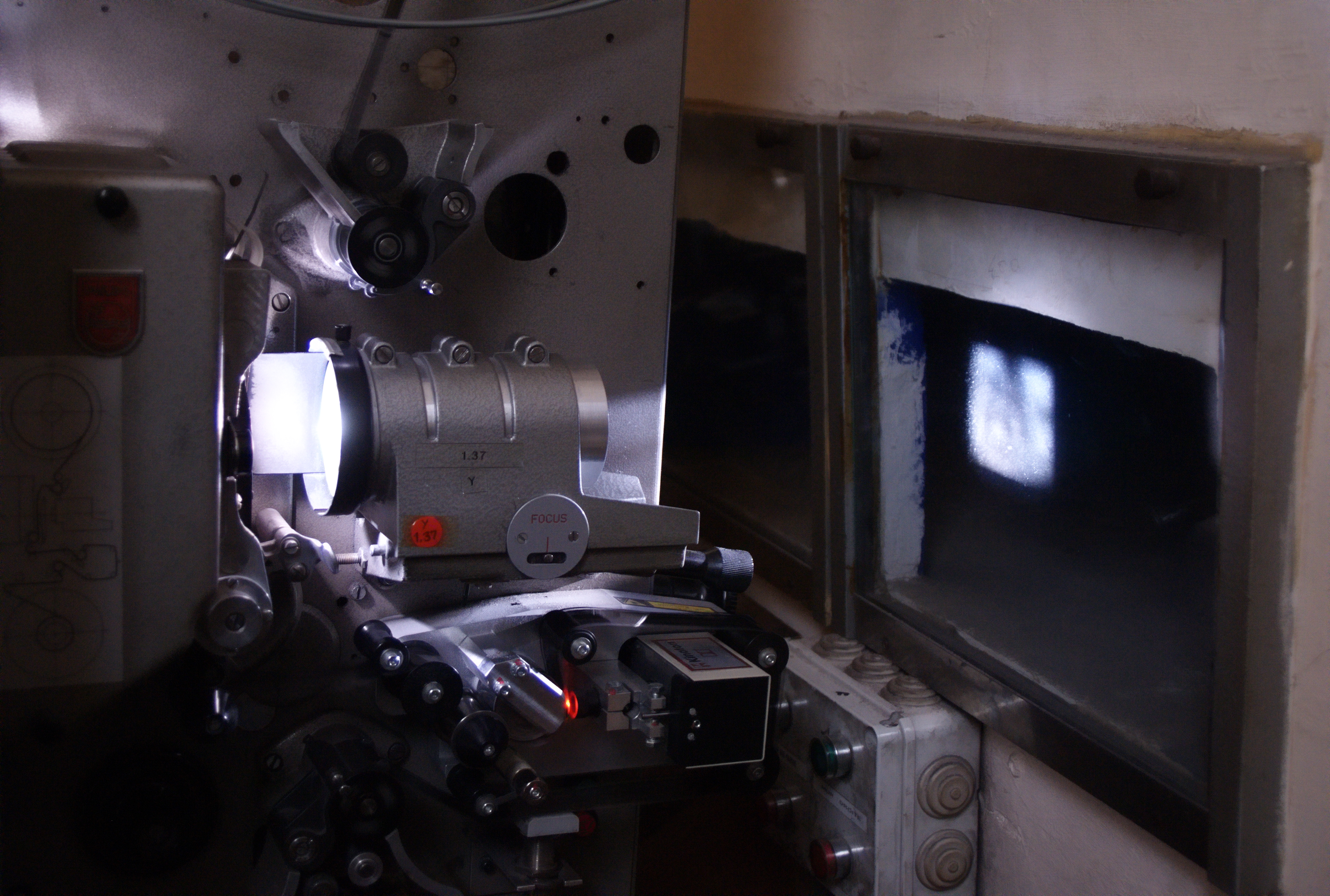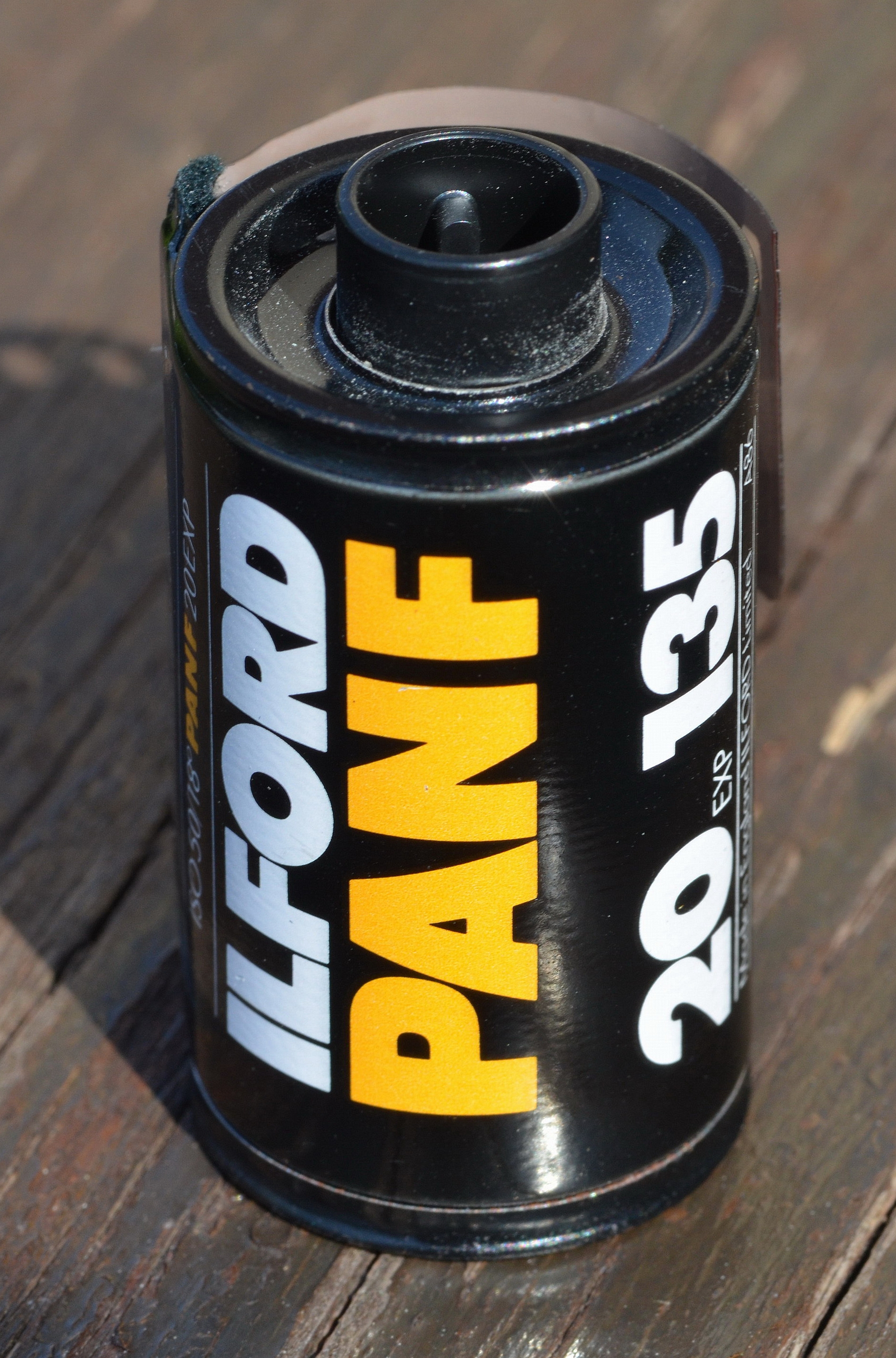|
Release Print
A release print is a copy of a film that is provided to a movie theater for exhibition. Definitions Release prints are not to be confused with other types of prints used in the photochemical post-production process: * Rush prints, or dailies, are one-light, contact-printed copies made from an unedited roll of original camera negative immediately after processing and screened to the cast and crew in order to ensure that the takes can be used in the final film. * Workprints, sometimes called cutting copies, are, like rush prints, copies of a camera negative roll, or from selected takes. A workprint may be roughly corrected for brightness and color balance. The prints are used for editing before the negative itself is conformed, or cut to match the edited workprint. * An answer print is made either from the cut camera negative or an interpositive, depending on the production workflow, in order to verify that the grading ("timing" in American English) conforms to specifications, ... [...More Info...] [...Related Items...] OR: [Wikipedia] [Google] [Baidu] |
Film
A film also called a movie, motion picture, moving picture, picture, photoplay or (slang) flick is a work of visual art that simulates experiences and otherwise communicates ideas, stories, perceptions, feelings, beauty, or atmosphere through the use of moving images. These images are generally accompanied by sound and, more rarely, other sensory stimulations. The word "cinema", short for cinematography, is often used to refer to filmmaking and the film industry, and to the art form that is the result of it. Recording and transmission of film The moving images of a film are created by photography, photographing actual scenes with a movie camera, motion-picture camera, by photographing drawings or miniature models using traditional animation techniques, by means of computer-generated imagery, CGI and computer animation, or by a combination of some or all of these techniques, and other visual effects. Before the introduction of digital production, series of still imag ... [...More Info...] [...Related Items...] OR: [Wikipedia] [Google] [Baidu] |
Digital Intermediate
Digital intermediate (typically abbreviated DI) is a motion picture finishing process which classically involves digitizing a motion picture and manipulating the color and other image characteristics. Definition and overview A digital intermediate often replaces or augments the photochemical timing process and is usually the final creative adjustment to a movie before distribution in theaters. It is distinguished from the telecine process in which film is scanned and color is manipulated early in the process to facilitate editing. However the lines between telecine and DI are continually blurred and are often executed on the same hardware by colorists of the same background. These two steps are typically part of the overall color management process in a motion picture at different points in time. A digital intermediate is also customarily done at higher resolution and with greater color fidelity than telecine transfers. Although originally used to describe a process that started wi ... [...More Info...] [...Related Items...] OR: [Wikipedia] [Google] [Baidu] |
Aspect Ratio (image)
The aspect ratio of an image is the ratio of its width to its height, and is expressed with two numbers separated by a colon, such as ''16:9'', sixteen-to-nine. For the ''x'':''y'' aspect ratio, the image is ''x'' units wide and ''y'' units high. Common aspect ratios are 1.85:1 and 2.39:1 in cinematography, 4:3 and 16:9 in television photography, and 3:2 in still photography. Some common examples The common film aspect ratios used in cinemas are 1.85:1 and 2.39:1.The 2.39:1 ratio is commonly labeled 2.40:1, e.g., in the American Society of Cinematographers' ''American Cinematographer Manual'' (Many widescreen films before the 1970 SMPTE revision used 2.35:1). Two common videographic aspect ratios are 4:3 (1.:1), the universal video format of the 20th century, and 16:9 (1.:1), universal for high-definition television and European digital television. Other cinema and video aspect ratios exist, but are used infrequently. In still camera photography, the most common aspect ra ... [...More Info...] [...Related Items...] OR: [Wikipedia] [Google] [Baidu] |
Movie Projector
A movie projector is an optics, opto-mechanics, mechanical device for displaying Film, motion picture film by projecting it onto a movie screen, screen. Most of the optical and mechanical elements, except for the illumination and sound devices, are present in movie cameras. Modern movie projectors are specially built video projectors. (see also digital cinema) Many projectors are specific to a particular film gauge and not all movie projectors are film projectors since the use of film is required. Predecessors The main precursor to the movie projector was the magic lantern. In its most common setup it had a concave mirror behind a light source to help direct as much light as possible through a painted glass picture slide and a lens, out of the lantern onto a screen. Simple mechanics to have the painted images moving were probably implemented since Christiaan Huygens introduced the apparatus around 1659. Initially candles and oil lamps were used, but other light sources, such ... [...More Info...] [...Related Items...] OR: [Wikipedia] [Google] [Baidu] |
Tasma
Tasma (Russian: ''Тасма'') is a Russian GOST and ISO certified manufacturer of black-and-white and colour photographic films. It also manufactures adhesive tape and demineralized water. Located in Kazan, Russia, it has been in operation since 1933 (starting as "Film Factory No. 8"). The name ''Tasma'' is derived from the Russian phrase ''Татарские светочувствительные материалы'' ("''Tatarskie Sveto Materialiy''"), meaning "Tatar Sensitized Materials"; this name was adopted by the company in 1974. During World War II, only Tasma's Kazan factory remained in operation, supplying the entirety of domestic Soviet photographic material for the war effort. For this effort, it was awarded a medal for the Order of the Red Banner of Labor in 1944. The company manufactures black and white negative films KN-1, KN-2, and KN-3, which are popular with photographers in Russia as well as motion picture cinematographers internationally. The company provide ... [...More Info...] [...Related Items...] OR: [Wikipedia] [Google] [Baidu] |
Ilford Photo
Harman Technology, trading as Ilford Photo, is a UK-based manufacturer of photographic materials known worldwide for its ILFORD branded black-and-white film, papers and chemicals. Historically it also published the '' Ilford Manual of Photography'', a comprehensive manual of everything photographic, including the optics, physics and chemistry of photography, along with recipes for many developers. Under the ownership of the industrial conglomerate ICI in the 1960s, the company produced a range of Ilfochrome (Cibachrome) and Ilfocolor colour printing materials at a new plant in Switzerland developed in partnership with the Swiss company CIBA-Geigy, which later acquired ICIs shares. By the 2000s, as the UK - Swiss company Ilford Imaging, the decline of the film market saw the UK company in receivership by 2004, but rescued by a management buy out; Harman Technology Ltd, which today continues the production of traditional black-and-white photographic materials, under the ILFORD, ... [...More Info...] [...Related Items...] OR: [Wikipedia] [Google] [Baidu] |
Agfa-Gevaert
Agfa-Gevaert N.V. (Agfa) is a Belgian-German multinational corporation that develops, manufactures, and distributes analogue and digital imaging products, software, and systems. It has three divisions: * Agfa Graphics, which offers integrated prepress and industrial inkjet systems to the printing and graphics industries. * Agfa HealthCare, which supplies hospitals and other care organisations with imaging products and systems, and information systems. * Agfa Specialty Products, which supplies products to various industrial markets. It is part of the Agfa Materials organization. In addition to the Agfa Specialty Products activities, Agfa Materials supplies film and related products to Agfa Graphics and Agfa HealthCare. Agfa film and film cameras were once prominent consumer products. However, in 2004, the consumer imaging division was sold to a company founded via management buyout. AgfaPhoto GmbH, as the new company was called, filed for bankruptcy after just one year, [...More Info...] [...Related Items...] OR: [Wikipedia] [Google] [Baidu] |
Fujifilm
, trading as Fujifilm, or simply Fuji, is a Japanese multinational conglomerate headquartered in Tokyo, Japan, operating in the realms of photography, optics, office and medical electronics, biotechnology, and chemicals. The offerings from the company that started as a manufacturer of photographic films, which it still produces, include: document solutions, medical imaging and diagnostics equipment, cosmetics, pharmaceutical drugs, regenerative medicine, stem cells, biologics manufacturing, magnetic tape data storage, optical films for flat-panel displays, optical devices, photocopiers and printers, digital cameras, color films, color paper, photofinishing and graphic arts equipment and materials. Fujifilm is part of the Sumitomo Mitsui Financial Group financial conglomerate (''keiretsu''). History 20th century Fuji Photo Film Co., Ltd. was established in 1934 as a subsidiary of Daicel with the aim of producing photographic films. Over the following 10 years, the comp ... [...More Info...] [...Related Items...] OR: [Wikipedia] [Google] [Baidu] |
DuPont
DuPont de Nemours, Inc., commonly shortened to DuPont, is an American multinational chemical company first formed in 1802 by French-American chemist and industrialist Éleuthère Irénée du Pont de Nemours. The company played a major role in the development of Delaware and first arose as a major supplier of gunpowder. DuPont developed many polymers such as Vespel, neoprene, nylon, Corian, Teflon, Mylar, Kapton, Kevlar, Zemdrain, M5 fiber, Nomex, Tyvek, Sorona, Corfam and Lycra in the 20th century, and its scientists developed many chemicals, most notably Freon (chlorofluorocarbons), for the refrigerant industry. It also developed synthetic pigments and paints including ChromaFlair. In 2015, DuPont and the Dow Chemical Company agreed to a reorganization plan in which the two companies would merge and split into three. As a merged entity, DuPont simultaneously acquired Dow and renamed itself to DowDuPont on August 31, 2017, and after 18 months spin off the merged entity' ... [...More Info...] [...Related Items...] OR: [Wikipedia] [Google] [Baidu] |
ORWO
ORWO (for ''ORiginal WOlfen'') is a brand of black and white film products, made in Germany. ORWO was established in East Germany in 1964 as a brand for photographic film and magnetic tape, mainly produced at the former ''ORWO Filmfabrik Wolfen'' (now Chemical Park Bitterfeld-Wolfen). The Wolfen factory was founded by AGFA (Aktien-Gesellschaft für Anilin-Fabrikation) in 1910 and developed the first modern colour film, which incorporated colour couplers, Agfacolor Neu, in 1936. The partition of Germany after the Second World War saw AGFA divided, into Agfa AG, Leverkusen in West Germany, and VEB Film und Chemiefaserwerk Agfa Wolfen in East Germany, which later adopted the brand ORWO. The company was privatised in 1990 as ORWO AG, but film production ceased at Wolfen in 1994 following the liquidation of the company, with its constituent parts closed or sold off. The Industry and Film museum Wolfen now occupies part of the original factory. One of the successor companies, ORWO ... [...More Info...] [...Related Items...] OR: [Wikipedia] [Google] [Baidu] |
Film Stock
Film stock is an analog medium that is used for recording motion pictures or animation. It is recorded on by a movie camera, developed, edited, and projected onto a screen using a movie projector. It is a strip or sheet of transparent plastic film base coated on one side with a gelatin emulsion containing microscopically small light-sensitive silver halide crystals. The sizes and other characteristics of the crystals determine the sensitivity, contrast and resolution of the film.Karlheinz Keller et al. "Photography" in Ullmann's Encyclopedia of Industrial Chemistry, 2005, Wiley-VCH, Weinheim. The emulsion will gradually darken if left exposed to light, but the process is too slow and incomplete to be of any practical use. Instead, a very short exposure to the image formed by a camera lens is used to produce only a very slight chemical change, proportional to the amount of light absorbed by each crystal. This creates an invisible latent image in the emulsion, which can ... [...More Info...] [...Related Items...] OR: [Wikipedia] [Google] [Baidu] |
Eastman Kodak
The Eastman Kodak Company (referred to simply as Kodak ) is an American public company that produces various products related to its historic basis in analogue photography. The company is headquartered in Rochester, New York, and is incorporated in New Jersey. Kodak provides packaging, functional printing, graphic communications, and professional services for businesses around the world. Its main business segments are Print Systems, Enterprise Inkjet Systems, Micro 3D Printing and Packaging, Software and Solutions, and Consumer and Film. It is best known for photographic film products. Kodak was founded by George Eastman and Henry A. Strong on May 23, 1892. During most of the 20th century, Kodak held a dominant position in photographic film. The company's ubiquity was such that its " Kodak moment" tagline entered the common lexicon to describe a personal event that deserved to be recorded for posterity. Kodak began to struggle financially in the late 1990s, as a result of the ... [...More Info...] [...Related Items...] OR: [Wikipedia] [Google] [Baidu] |






